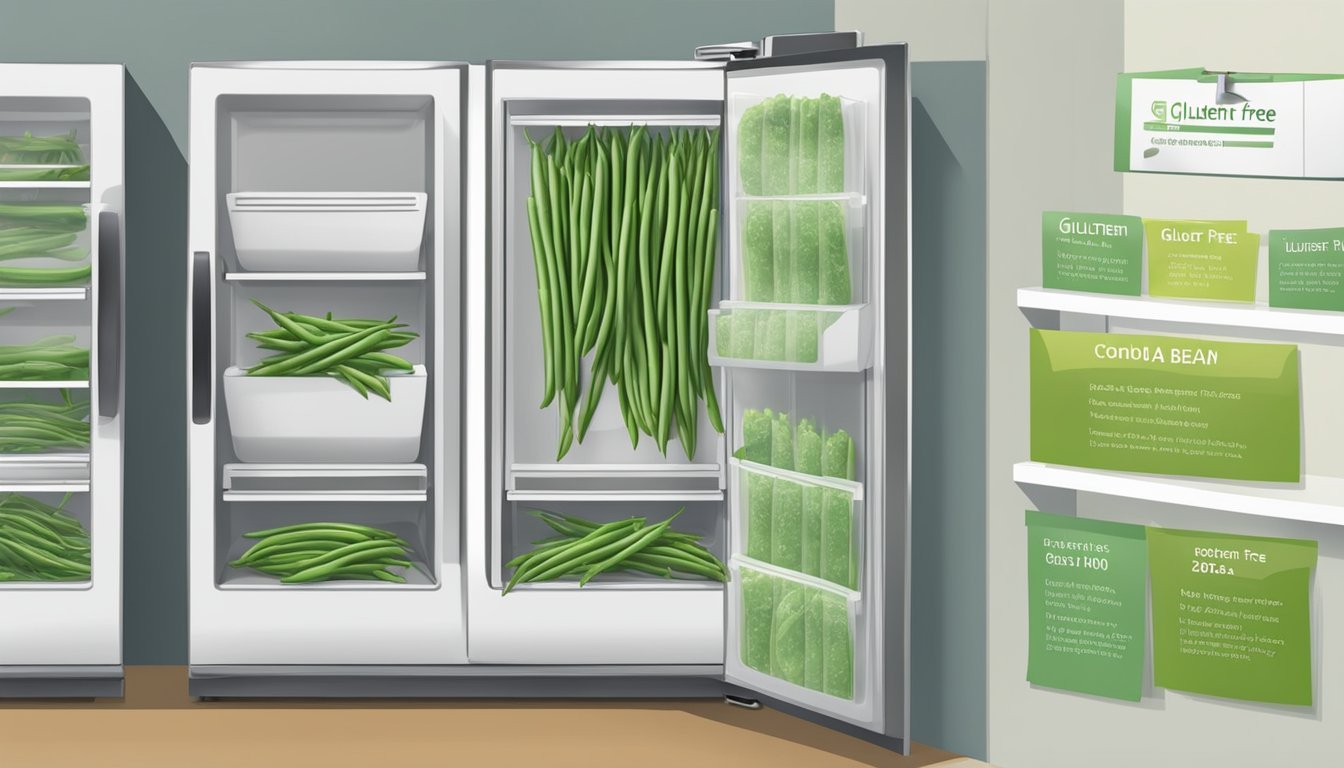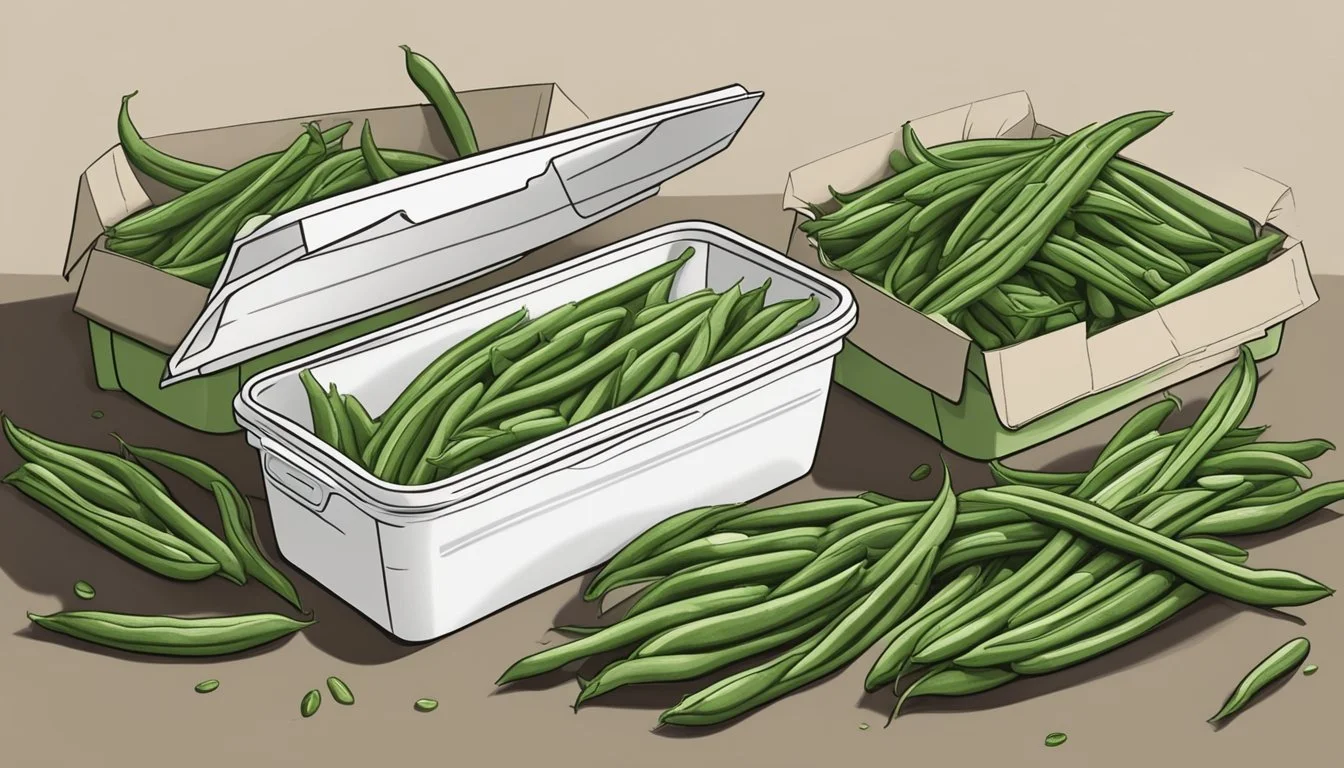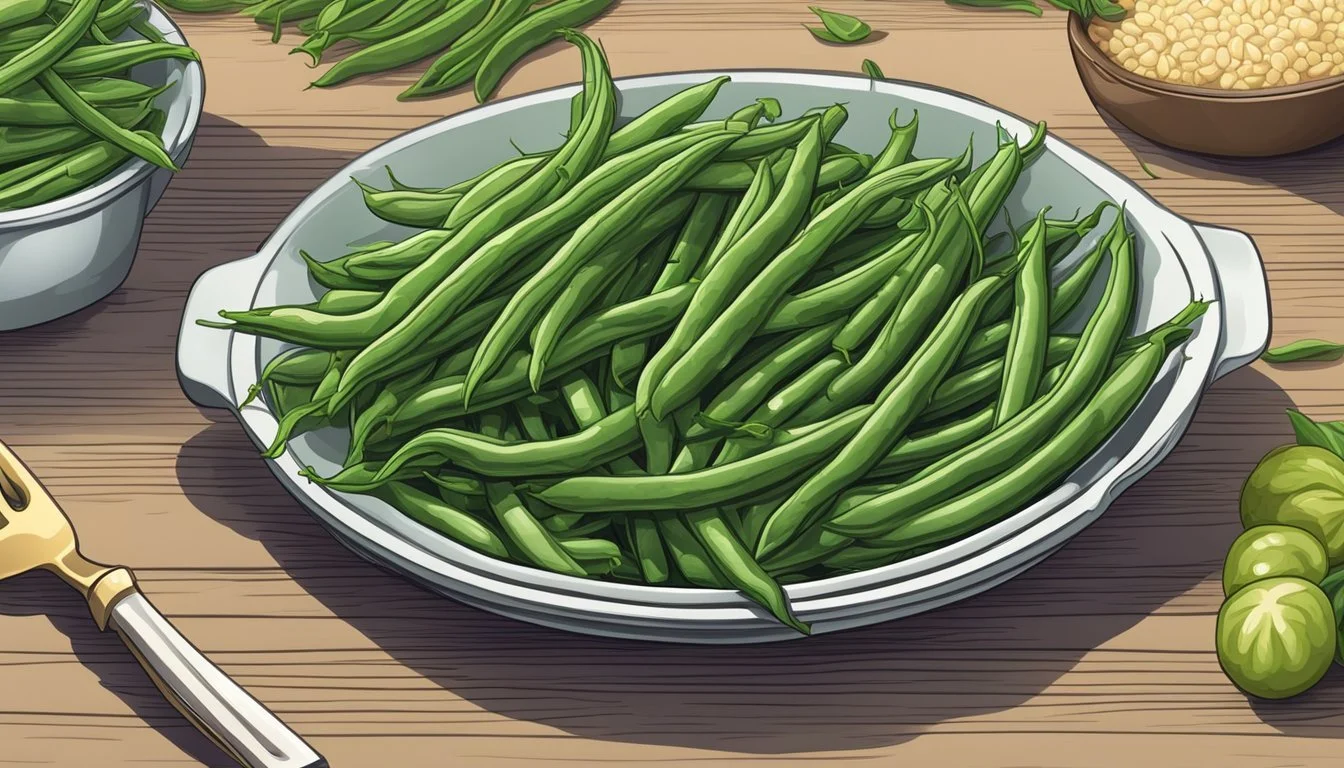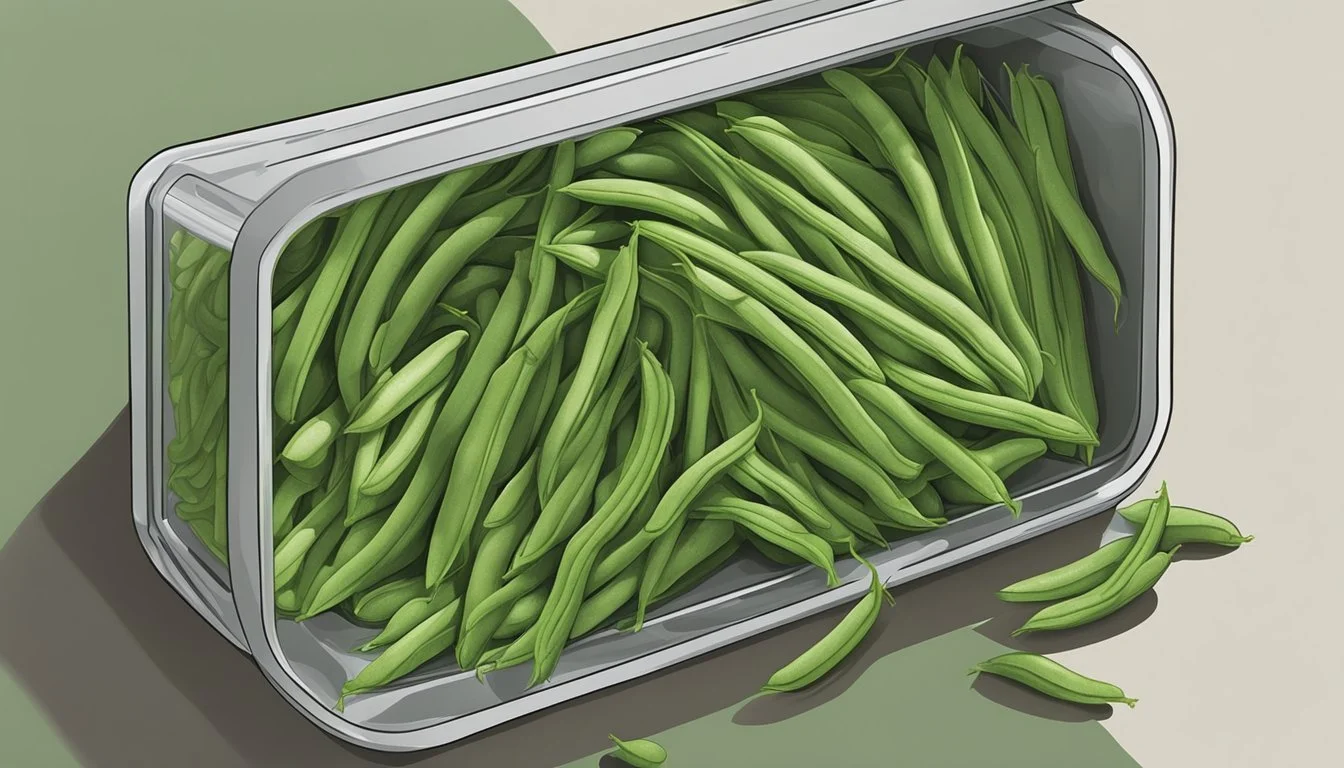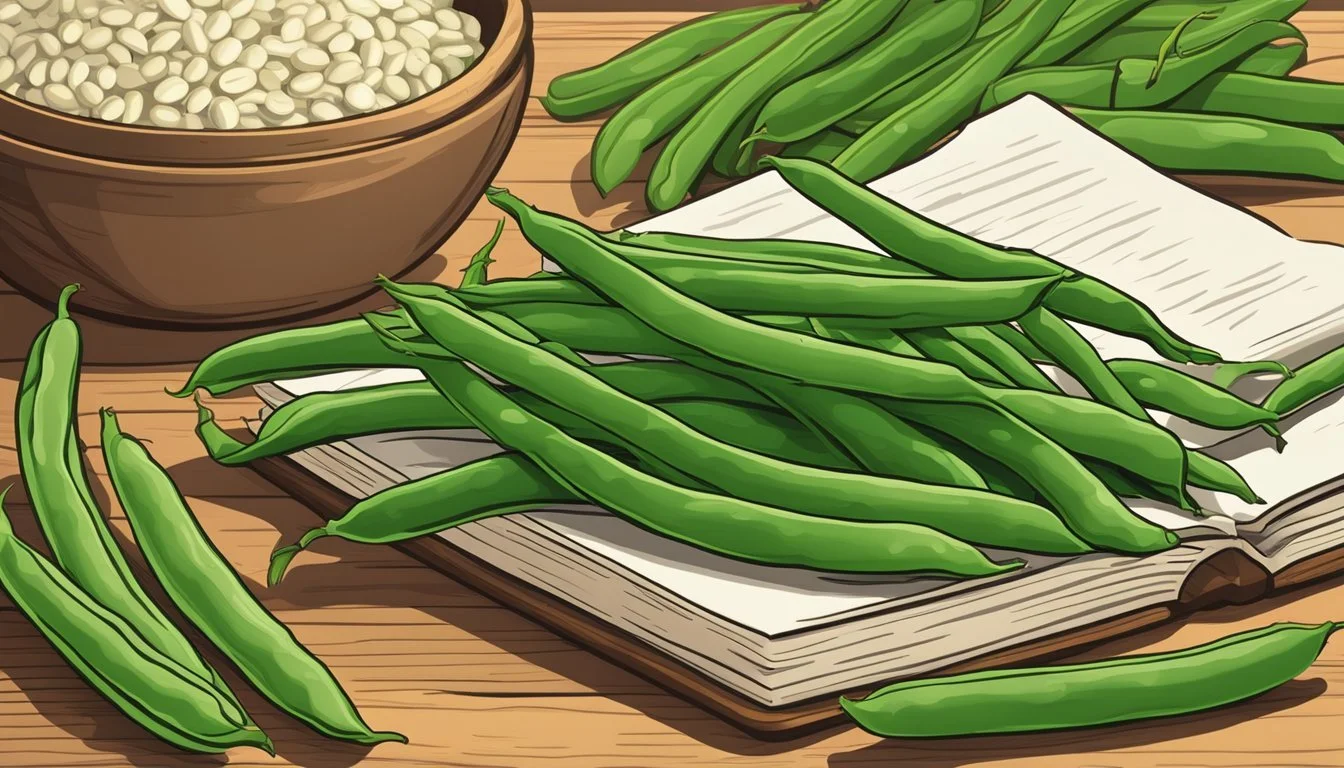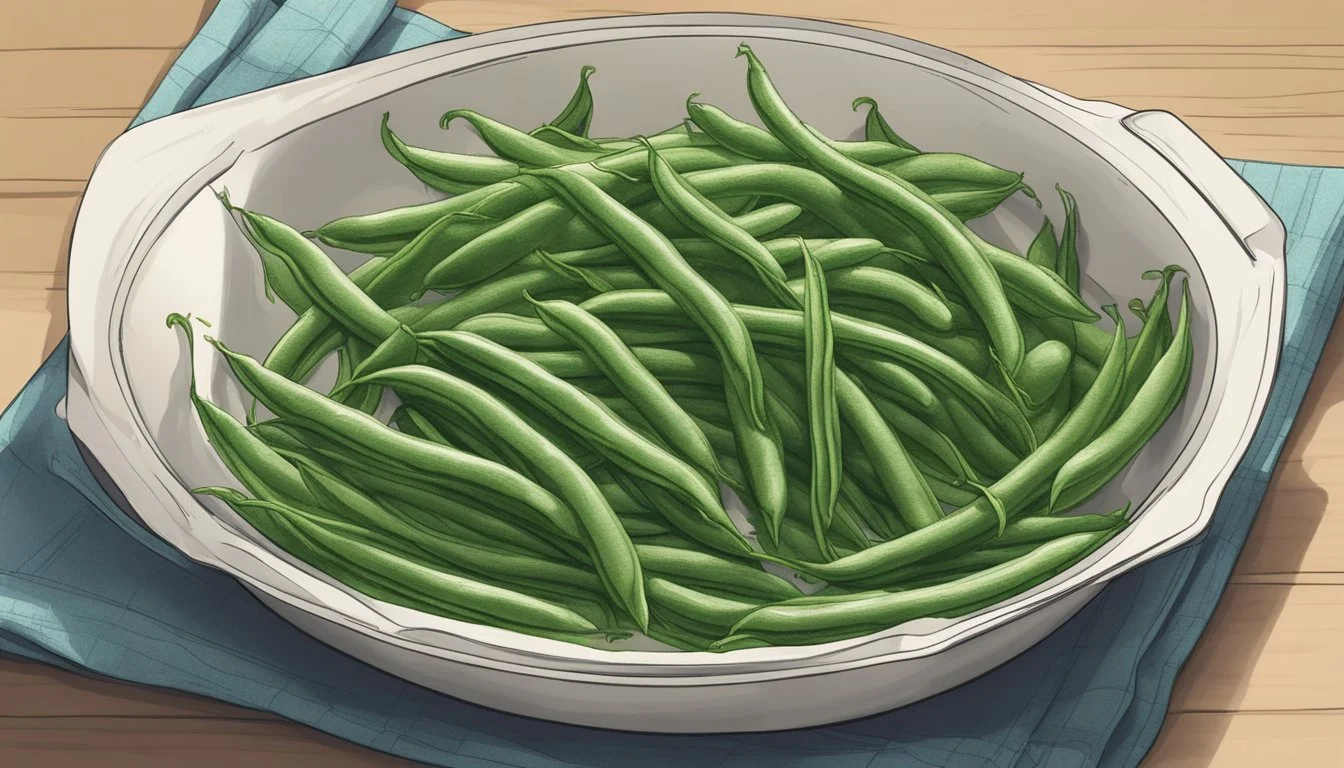How Long Do Gluten-Free Green Beans Last?
Expert Shelf-Life Guide
Green beans are a staple in many gluten-free diets, thanks to their versatility and nutritional benefits. These vibrant vegetables can enhance various dishes, from salads to casseroles, while providing essential vitamins and minerals. When stored properly, fresh green beans can last up to a week in the refrigerator.
Stored unwashed and raw in a sealed plastic bag, green beans can maintain their freshness and snap for several days. If longer storage is needed, blanching the green beans before freezing can extend their shelf life significantly, keeping them fresh for up to six months. This method involves boiling the beans for a few minutes, then immediately cooling them in an ice water bath to preserve their bright color and crisp texture.
For those who prefer canned products, gluten-free canned green beans are a great alternative. When kept in a cool, dry place, these canned beans can remain good for three to five years. This longevity makes them a convenient option for those who want to ensure a steady supply of green beans without worry about frequent spoilage.
Understanding Gluten-Free Foods
Gluten-free foods are essential for individuals with celiac disease or gluten sensitivity. They help avoid adverse reactions and support a healthier digestive system.
What Makes Green Beans Gluten-Free
Green beans are naturally gluten-free. They do not contain wheat, barley, or rye, which are common sources of gluten. This makes them a safe option for those with gluten intolerance or celiac disease.
Label checking is crucial for all processed beans. Additional ingredients may introduce gluten. It's important to ensure that no cross-contamination occurs during processing.
Fresh green beans are the best option. Canned or frozen varieties can also be safe if they do not contain gluten-based additives.
Health Benefits of Gluten-Free Diet
A gluten-free diet offers numerous health benefits, especially for those with celiac disease or gluten sensitivity. This diet can help reduce symptoms like bloating, fatigue, and digestive issues.
Aiding in gut healing is a key advantage. When gluten is removed, the intestines can start to repair damage caused by gluten consumption.
People on a gluten-free diet often report improved energy levels and overall well-being. This dietary change reduces inflammation, leading to better health outcomes.
Key gluten-free foods include fruits, vegetables, meats, and nuts. Diversifying the diet ensures balanced nutrition without the adverse effects of gluten.
Selection and Preparation of Fresh Green Beans
To ensure the best quality in your gluten-free green bean dishes, it's crucial to select and prepare fresh green beans correctly. By choosing the right beans and prepping them carefully, you can enhance their flavor and extend their freshness.
How to Select the Best Green Beans
When selecting green beans, aim for vibrant color and firm texture. Look for beans that are bright green and free from any spots or blemishes. Avoid beans that appear limp or have a yellowish tinge, as this indicates they are past their prime.
Check the stem end of the bean. It should snap easily when bent, signaling freshness. Beans should also be uniform in size for even cooking.
Make it a habit to purchase from local farmers' markets or trusted grocers who restock frequently.
Proper Techniques to Wash and Trim Green Beans
Washing green beans is essential to remove any dirt or residues. Rinse them under cold running water and use your hands to rub off any surface impurities. For tougher dirt, soak in a bowl of water for a few minutes before rinsing.
Trimming involves removing the stem end and tail. Using a sharp knife or kitchen scissors, snip off the ends of each bean. Grouping several beans together and cutting multiple at once can help save on prep time.
To maintain quality, avoid washing and trimming beans until just before use, as this helps retain their crispness and nutritional value. Store unwashed beans in a plastic bag in the fridge if not using immediately.
Storing Green Beans for Freshness
Green beans can be kept fresh and crisp for longer periods by storing them under the right conditions. Following precise methods for refrigeration and freezing ensures that your green beans maintain their quality, texture, and flavor.
Optimal Conditions to Store Fresh Green Beans
Fresh green beans should be stored in the refrigerator. Begin by washing and thoroughly drying them to remove any surface moisture, which can cause mold. Storage in an airtight container or a produce bag with small ventilation holes helps in keeping humidity levels balanced.
Keeping green beans between 32°F and 35°F in the refrigerator retains their freshness. Ensure they are not stored where they might freeze. They typically last about 7 to 10 days when stored correctly.
Freezing Green Beans for Long-Term Storage
For long-term storage, freezing is the best option. Start by trimming the ends and blanching the green beans. Boil them for three minutes and then quickly transfer to ice water to stop the cooking process. This helps to preserve their color, flavor, and texture.
Thoroughly dry the beans before placing them in an airtight freezer bag, removing as much air as possible to prevent freezer burn. Frozen green beans can be stored for up to 8 months without significant loss of quality.
Do's and Don'ts of Refrigerating Green Beans
Do's:
Store green beans in the crisper drawer.
Use perforated plastic bags or moisture-proof containers.
Keep the temperature consistent and avoid temperature fluctuations.
Don'ts:
Do not leave green beans at room temperature for extended periods.
Avoid storing in high-humidity areas of the fridge without adequate ventilation.
Do not wash green beans right before storage if you plan to keep them fresh for several days, as added moisture can lead to spoilage.
By following these guidelines, you can ensure that your green beans stay fresh, crisp, and ready to use for a variety of dishes.
Cooking and Serving Green Beans as a Side Dish
Green beans are a versatile and delicious addition to any meal, from classic recipes to new healthy twists. They make an excellent side dish for holidays or everyday dinners alike.
Classic Green Bean Casserole Recipe
Green bean casserole is a beloved traditional recipe, especially popular during holiday meals. The classic version involves green beans, cream of mushroom soup, and crispy fried onions.
Start by preheating the oven to 350°F (175°C). In a mixing bowl, combine two cans of green beans (drained), one can of cream of mushroom soup, and ⅔ cup of milk. Mix well and pour the mixture into a baking dish. Bake uncovered for 25 minutes, then sprinkle 1¼ cups of fried onions on top. Bake for an additional 5 minutes until the onions are crispy.
Healthy and Flavorful Ways to Cook Green Beans
For a healthier approach, steaming or sautéing green beans preserves nutrients and enhances their natural flavor.
To steam, place the beans in a steamer basket over boiling water, cover, and cook for 5-7 minutes until bright green and tender-crisp. For a flavorful twist, sauté green beans in olive oil with garlic and a pinch of red pepper flakes. Cook over medium-high heat for 5-6 minutes, stirring occasionally. This method intensifies the beans' natural sweetness and adds a touch of spice without excess calories.
Making the Perfect Side Dish for Holidays
Green beans pair well with various holiday main courses and are easy to prepare in large batches. For a festive touch, try roasting green beans with almonds or pecans.
Preheat the oven to 425°F (220°C). Toss green beans with olive oil, salt, and pepper. Spread them on a baking sheet in a single layer. Roast for 20-22 minutes, shaking the pan occasionally. Once roasted, transfer to a serving bowl and sprinkle with toasted nuts. This dish is not only visually appealing but also adds a delightful crunch and flavor suitable for special occasions.
Preserving Green Beans' Nutritional Value
Maintaining the nutritional value of green beans involves proper storage and handling techniques. These methods not only help to preserve their taste but also retain essential vitamins, minerals, and fiber.
Balancing Taste with Nutritional Benefits
Storing fresh green beans correctly is crucial for retaining their rich nutrient profile, which includes fiber, vitamins, and essential minerals. To maximize these benefits, store them unwashed in a sealed plastic bag in the vegetable drawer. This slows down spoilage and maintains their crispness.
Canned green beans might lose some nutrients during the canning process. However, they remain a convenient and long-lasting option as they can be stored for several years in good conditions. For those seeking to preserve most of the nutritional value while extending shelf life, freezing is ideal. Blanching green beans in boiling water before freezing helps in retaining their nutrients.
When aiming to keep cooked green beans nutritious, cool them quickly and store in airtight containers in the refrigerator. This approach helps prevent nutrient degradation and ensures they stay fresh for several days.
Gluten-Free Recipes and Variations
There are several ways to create and customize gluten-free green bean casseroles. Some popular variations include dairy-free and vegan options.
Creating a Gluten-Free Green Bean Casserole
A gluten-free green bean casserole can be made using gluten-free ingredients to cater to dietary restrictions. Green beans are usually blanched in boiling water and then rinsed in an ice bath to maintain their color. The casserole sauce often combines gluten-free cream of mushroom soup, salt, black pepper, and thyme.
After mixing the green beans with the sauce, they are transferred to a baking dish. The topping can be made from crispy shallots or gluten-free fried onions, which are typically achieved by coating onions with a mixture of cornstarch and gluten-free flour before frying them until crispy. The prepared dish is then baked to create a warm, comforting casserole.
Dairy-Free and Vegan Variations
For those who are dairy-free or vegan, adjustments can be made to the traditional recipe. Coconut milk or almond milk can replace regular milk. For the sauce, mushroom gravy made from vegetable broth can be used instead of traditional cream of mushroom soup. Nutritional yeast can substitute for cheese to give a cheesy flavor without dairy.
In place of fried onions coated in flour, one can use gluten-free bread crumbs or crushed nuts to add a crunchy texture. Panko flakes provide another gluten-free and vegan-friendly option. These alterations ensure the casserole remains delicious while meeting dietary needs without compromising on taste or texture.
Reheating and Maintaining Texture
To reheat and maintain the texture of gluten-free green beans, it is essential to follow the right methods to preserve their crispness and tenderness. Different appliances and techniques can affect the final result.
Best Practices for Reheating Green Beans
When reheating green beans, using the oven is a reliable method. Preheat the oven to 350°F (175°C). Arrange the green beans in a baking dish, add a bit of water or broth to maintain moisture, and cover with foil. Bake for 10-15 minutes.
In a microwave, place green beans in a microwave-safe dish. Heat on high in 30-second intervals, stirring between each to promote even heating. Avoid overheating, as it can make them soggy.
For an air fryer, which is excellent for retaining crispness, set it to 350°F. Spread green beans in a single layer and heat for 6-8 minutes, shaking the basket occasionally for uniform cooking.
Keeping Green Beans Crisp and Tender
To keep green beans crisp and tender, avoid overcooking during reheating. In the oven, sprinkle salt, pepper, or garlic powder before baking for added flavor without compromising texture.
In the microwave, stir frequently to ensure even heating and check often to prevent them from becoming too soft. Using an air fryer at lower temperatures, like 350°F, helps preserve their natural texture.
Adding a splash of water or broth when reheating helps prevent drying out. Cover with foil in the oven to trap steam, maintaining both moisture and texture.
By integrating these methods, green beans can be reheated effectively.

